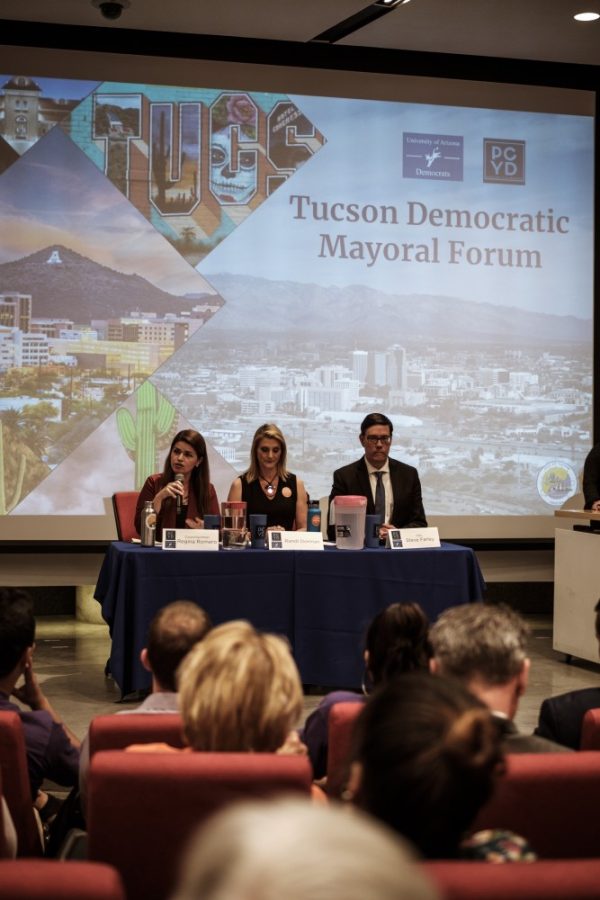On Saturday, June 22nd, Ward 1 City Council candidates– Lane Santa Cruz, Sami Hamed, Rob Ellias, and Miguel Ortega– and the three competing democratic Tucson mayoral candidates– Randi Dorman, Regina Romero, and Steve Farley– came together at El Rio Neighborhood Center to discuss gentrification in Tucson.
As affluent Tucson continues to seep into traditionally lower-income areas, with developers buying cheap property on the South and West sides, rents have increased and displacement has become a painful reality.
Many of the development projects behind this displacement have been built for–and depend on– seasonal business: that of snow-birds and out-of-state students. Catering to the latter and punctuating the city’s skyline, luxury student housing developments have appeared at an incredible rate, causing concern and push-back within the community.
Candidate Ortega referred to the luxury student housing developments as an encroachment.
“We have to listen and recognize the leadership that has already been fighting this encroachment for many, many years,” Ortega said. “The students that come in, they have to respect the historic nature, they have to respect the quality of life of our residents.”
The UA is a growing institution. As the forum’s moderator, Arizona Public Media border reporter Nancy Montoya, phrased it, “this is a question of where do we put all these students?”
“The UA is a land-grant institution that operates more like a business, always trying to bring in outsiders,” said Santa Cruz.
Though total UA enrollment increased from 2017 to 2018, enrollment of in-state students decreased.
RELATED: Democratic candidates meet at UA, discuss stances on immigration, development and education
Hamed linked the luxury student housing complexes directly to displacement.
“These buildings that have come up for student housing displace people– businesses or homes,” he said. “But not just that, they also displace our students within the university.”
He said the new housing is very expensive and does not benefit Tucson’s students, but those out-of-state.
“It’s important that we’re having this discussion, and protecting our neighborhoods, preserving them, from the university,” said Santa Cruz. “But we need to make sure that the university is serving our students. A lot of our students that are from here can’t afford the luxury student housing.”
More high-rise, high-end student housing continues to be built in and around downtown– though Santa Cruz called the market over-saturated, developers would seem to disagree. “There are a surprising number of students with deep pockets looking for a certain lifestyle,” said mayoral candidate and former developer Randi Dorman.
Dorman said that before this trend of luxury student housing developments, starting about 6-7 years ago, developers would buy old houses in neighborhoods. These would be converted to mini-dorms in which the students would “unleash havoc.” The mini-dorms wouldn’t be able to be converted back to houses.
After community push-back, high-rises claimed the stage. Dorman said in this way, they’re a positive impact. She speculated that, especially with the Mark on Broadway, Tucson may finally be hitting saturation of luxury student housing.
Follow The Daily Wildcat on Twitter









